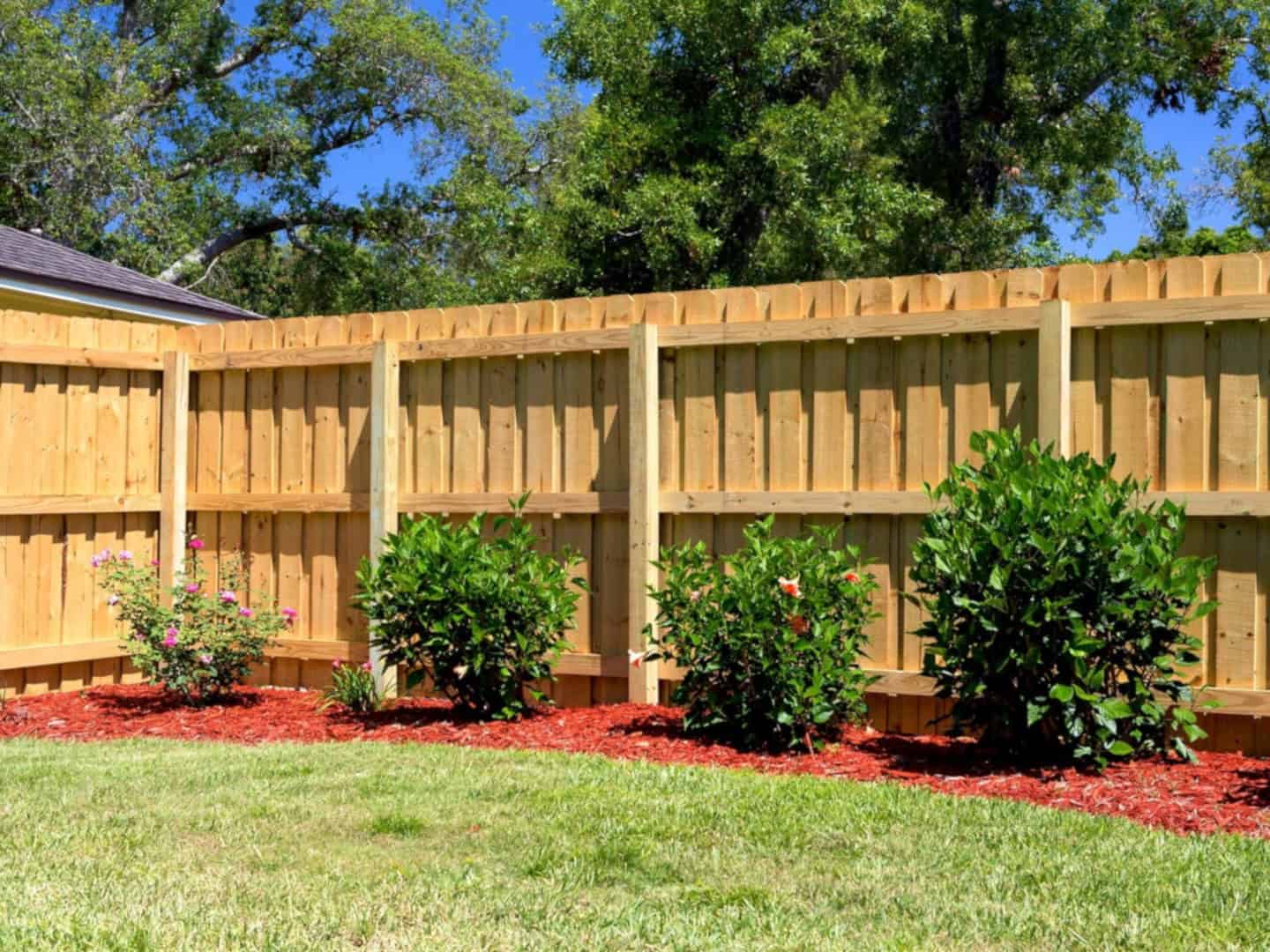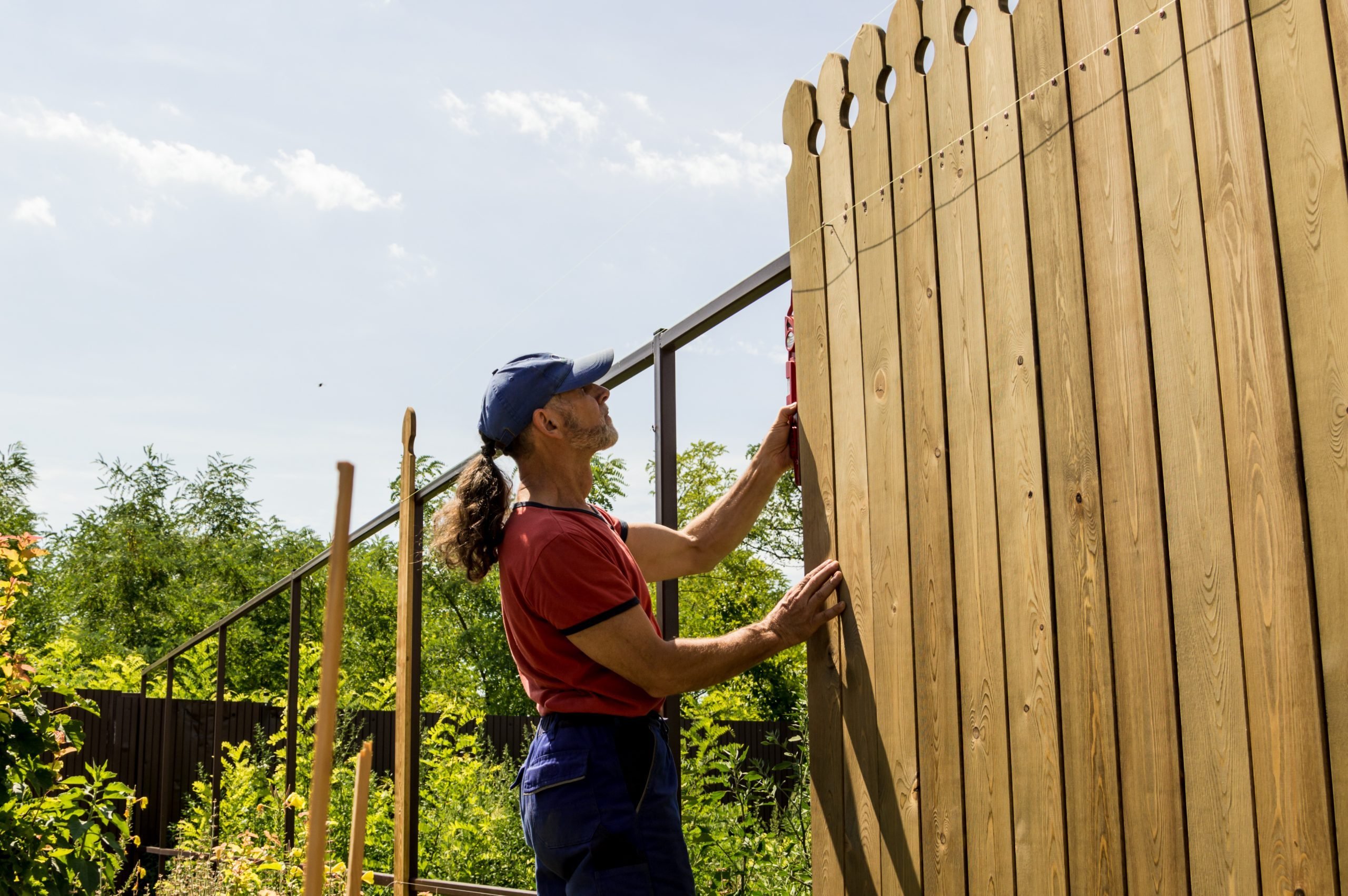Why Hiring Gadsden Fence Makes Your Installation Easier and Faster
The Ultimate Checklist for Effective Fencing Setup Jobs
When you're intending a fencing setup project, it's vital to have a clear method in location. Beginning by defining your objective and objectives, whether it's for privacy or safety and security (gadsden fence company). Understanding neighborhood regulations can conserve you time and frustrations later. From there, picking the best products is essential for both toughness and aesthetic appeals. There's more to take into account before you break ground. Allow's check out the steps that will certainly guarantee your job is a success
Specify Your Purpose and Objectives

Research Local Rules and Permits
Exactly how do you ensure your fencing setup goes efficiently? Beginning by investigating regional laws and permits. Every location has specific legislations regarding secure fencing-- height, product, and positioning can differ widely. Consult your regional zoning workplace or structure division to recognize what's required in your neighborhood.You may require a permit before you dig, especially if you're near residential or commercial property lines or energies. Falling short to comply with regulations can bring about fines and even having to take down your fence.Also, consider house owners organization (HOA) regulations if you stay in an area with one. They frequently have extra guidelines that you'll need to comply with.
Choose the Right Products
When selecting products for your fence, think of toughness and just how they'll stand up against the elements. You'll likewise wish to strike a balance between visual appeals and functionality to assure your fencing looks excellent while serving its purpose. Taking the time to pick the best materials can make all the distinction in the long life and appearance of your fence.
Product Durability Considerations
As you select materials for your fencing, it's necessary to review their sturdiness, because various options can substantially affect the durability and maintenance of your setup. Timber, while aesthetically pleasing, requires routine therapy to ward off rot and insects. On the various other hand, plastic offers excellent resistance to fading and breaking but can be a lot more expensive upfront. Metal fencings, like aluminum or functioned iron, provide toughness and durability, however they might need routine rust security. Consider your regional environment as well; rough weather condition can influence product efficiency. Eventually, choosing the ideal long lasting material will save you money and time in the future, ensuring your fencing stands strong versus the components and decreases upkeep initiatives. Select sensibly!
Aesthetic and Functional Equilibrium
While you may focus on longevity when selecting fencing products, achieving a visual and functional balance is just as important. Believe regarding how your option matches your home's style and the bordering landscape. Wooden fencings can offer beauty yet might need even more maintenance, while vinyl gives a smooth, modern appearance with much less maintenance. Metal fences, like functioned iron, can add style and security, but ensure they fit the overall vibe of your property. Take into consideration color, appearance, and design-- these components can boost your aesthetic allure. Constantly maintain your neighborhood climate in mind, as it affects material performance. Inevitably, choose materials that not just serve their function yet likewise raise your outside area's aesthetic appeal.
Strategy Your Fencing Style and Design
A solid prepare for your fencing design and format is necessary to ensure a successful installation. Begin by determining the purpose of your fencing-- whether it's for personal privacy, safety and security, or visual appeals. Next, take into consideration the design that complements your home and landscape. You'll desire to choose materials that fit your budget and upkeep preferences.Measure your backyard accurately, noting the limits where the fencing will certainly go. Think about the height and spacing of the blog posts, guaranteeing they satisfy regional laws. Map out a format to picture exactly how your fencing will look, remembering of any inclines or challenges. Don't fail to remember to make up entrances for easy access. Consult with your next-door neighbors if the fence influences common home lines, advertising a good reputation and avoiding conflicts. By thoroughly planning your layout and layout, you set the phase for a smooth setup process and a fence that meets your requirements.
Prepare Your Website for Installation
Before you begin mounting your fencing, you require to prepare the website. Clear the location of any kind of obstacles, see to it you know your building lines, and inspect neighborhood laws to avoid any type of difficulties. Taking these steps will certainly set a strong foundation for your fencing project.
Clear the Area
Clearing the location is essential for a smooth fence setup. Begin by eliminating any type of obstacles like rocks, debris, or old fence products. This makes it much easier for you and your team to work successfully. Next, trim any disordered plant life, such as shrubs or tree branches, that can hinder the setup process. If you have any outdoor furnishings or decorations near the fencing line, relocate those out of the means also. This not only protects against damages however also assures your work space is secure. Take a moment to inspect for any below ground utilities. Call your local energy firm if you're uncertain. A clear, organized site sets the stage for a successful and hassle-free installation.
Situate Residential Property Lines
Identifying your residential or commercial property lines is important to verify your fence is set up appropriately and legitimately. Begin by examining your home action, which commonly consists of a study or map outlining the boundaries. If you do not have a study, consider hiring an expert property surveyor. They'll mark the exact lines, helping you prevent disagreements with next-door neighbors. Once you have actually established your limits, make use of stakes or flags to detail the area where your fencing will go. This visual aid not just assists you remain within your limits yet likewise gives a clear referral for your installation. Remember, clear residential property lines can conserve you from potential legal problems and neighborly disputes later on, so put in the time to validate accuracy before proceeding.

Check Local Rules
When you have actually established your residential property lines, checking local guidelines is the next action in preparing your site for setup. Neighborhood regulations can determine fencing elevation, materials, and also positioning. Beginning by contacting your neighborhood zoning workplace or seeing their website to gather essential information. Make certain to ask about permits, as lots of areas require you to obtain one before you begin any installation. Look into any type of home owner organization (HOA) guidelines that might use in your neighborhood. Recognizing these regulations upfront can conserve you from potential fines or the need to eliminate your fencing later. Taking these actions warranties your fencing abides by local standards and helps you avoid frustrations down the roadway.
Mount Your Fence Properly
When you prepare to install your fencing, assuring appropriate positioning and deepness is important for its longevity and straight from the source security. Start by noting the layout with risks and string to picture the fence line. Make certain your articles are spaced equally, typically 6 to 8 feet apart, depending upon your fencing type.Dig post holes a minimum of one-third the length of informative post the posts, and consider much deeper holes for included stability, particularly in windy locations. Use gravel at the base for drain and set the blog posts in concrete, ensuring they're level and plumb.While securing the panels, maintain them straight and flush with the messages. If you're installing an entrance, verify the dimensions to guarantee it turns openly. After everything's in position, step back and validate that your fencing looks even and expert. Making the effort to set up correctly currently will conserve you headaches later on!
Maintain Your Fencing for Longevity
To maintain your fencing looking excellent and standing solid for many years, regular upkeep is essential (fence company gadsden al). Beginning by evaluating your fence at the very least two times a year. Look for any indications of damages, such as loosened boards or rusted equipment. If you spot problems, address them promptly to prevent further deterioration.Cleaning your fencing is equally crucial. Remove dirt, debris, and mold with a mild soap solution and a soft brush. For wood fencings, think about using a sealer or discolor every couple of years to secure against wetness and UV rays.Don' t forget greenery! Trim any kind of plants or hedges that might be raiding your fence, as they can cause damage over time.Finally, keep an eye on the ground around your fence. Preserve correct water drainage to stop water pooling, which can deteriorate the foundation. By adhering to these actions, you'll guarantee your fence remains lovely and practical for several years ahead
Regularly Asked Inquiries
How much time Does a Regular Fencing Installation Take?
A typical fencing installation generally takes one to three days, depending upon the size and complexity of the task. You must think about factors like weather, terrain, and the kind of materials you're using.

Can I Mount a Fencing on an Incline?
Yes, you can mount a fence on an incline. You'll require to change the fencing panels to comply with the surface, making sure security and visual appeals. Make sure to plan thoroughly to achieve the most effective results.
What Tools Do I Need for Fence Installation?
For fence installment, you'll need a message hole digger, description level, measuring tape, hammer, saw, and a power drill. Don't forget safety and security equipment like handwear covers and safety glasses to shield on your own throughout the job.
How Do I Handle Energy Lines Throughout Setup?
Before excavating, constantly contact your regional utility firms to locate underground lines. Make use of an utility locator solution, mark the areas clearly, and prevent digging within those zones. It'll keep you secure and prevent pricey problems.
What Is the Typical Cost of Fence Installment?
The typical cost of fencing setup differs extensively, usually ranging from $1,500 to $4,000. Variables like products, labor, and location affect your overall costs, so it's smart to get multiple quotes prior to determining.
Conclusion
In recap, by following this best list, you can guarantee a successful fence installation task that fulfills your needs. Defining your goals, recognizing policies, choosing the right materials, and preparing your site are all crucial steps. Once your fence is set up, continuous upkeep will keep it looking terrific and functioning well for several years to come - fence company near me. With cautious planning and focus to detail, you'll create a fencing that not just improves your building but additionally offers the privacy and protection you desire